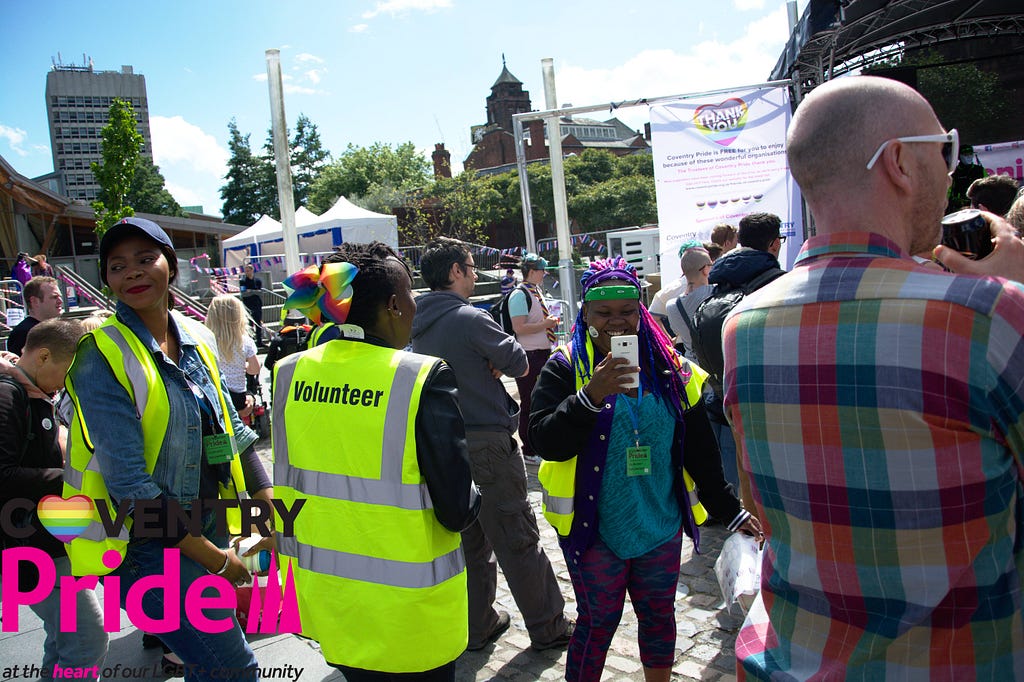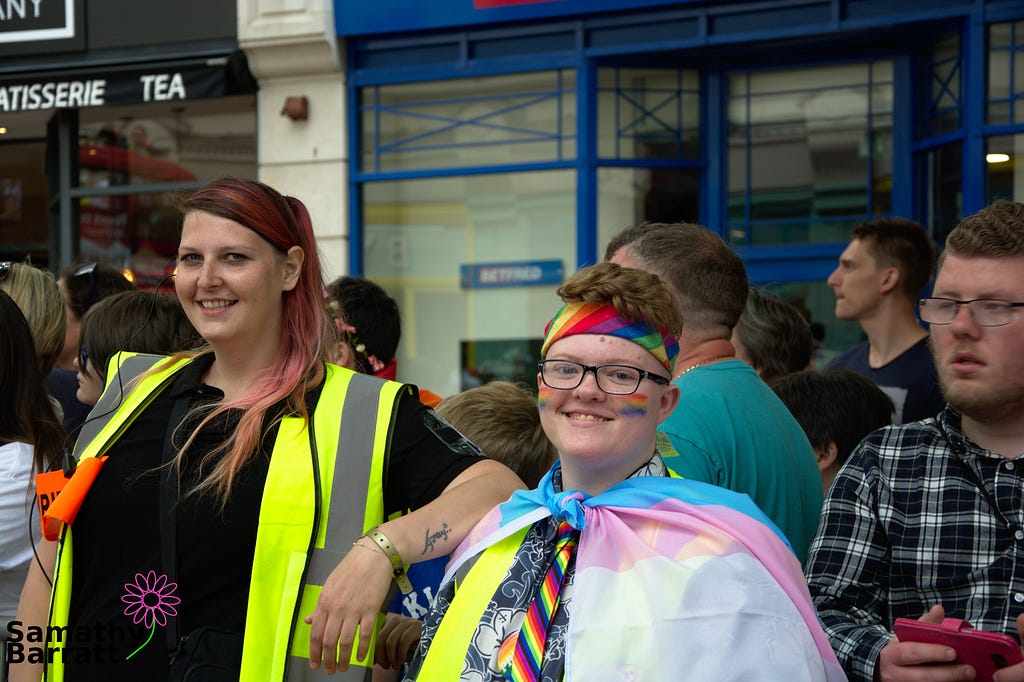Samathy from Stories by Samathy on Medium

Pride Vibes: As a photographer for Gay Pride Pics, I see lots of Prides across the UK every year. Each Pride has a different feel. This series will describe what each Pride was like and what the vibe of the pride was like.
The entire series is my opinion and mine only. Take it as you will. Note that this opinion comes from a 20 something extroverted transwoman who is herself a pride organiser.
I’m still working out what this series is going to be like. Bear with me.
Full Disclosure: I am a trustee and organiser of Coventry Pride. I work specifically on Press and Publicity. This post will be more biased than normal.
Previous: Birmingham Pride
Coventry Pride is in its 3rd year. It’s a smallish pride with a big personality. It brands itself as a ‘Community Pride’ and makes a huge effort to welcome all members of the extended LGBTQIA+ community.
Coventry is a completely free pride welcoming attendees in to a new venue in the centre of the city, University Square.
The venue is much larger than the previous at FarGo Village allowing for massive expansion this year.

Situated right outside the iconic dual Cathedrals the new venue proved much better than last year.
It’s a much bigger space and the event felt very open and a lot less crowded than last year’s pride.
Although, it certainly didn't feel packed, it certainly felt buzzing with happy energy.
The main stage was fairly large and could be seen and heard throughout most of the main square area. Most of the acts proved to be a great success with the audience.
Most of them were musical acts with a smattering of comedy, with the drag acts largely kept to the cabaret stage which is inside Square One, the Coventry University Student’s Union bar and club.
The main square area also featured a bar, which, despite its central location did not result in large amounts of drunk people making me feel uncomfortable.
In fact, I don’t think I saw anyone I would be able to describe as anything other than sober. Which, for me is a good thing.
The supporting stages in Square One featured smaller musical acts and community comedy performances.
Welcomed there were a host of great acoustic musical performances, drag and both small-time and big-time comedy.

The diversity of the event was wonderful.
Being a free event, Coventry Pride is lucky to be able to be open to people of all ages and orientations.
There were lots of families and younger people attending, which was fantastic to see and really helps with the open and welcoming feel of the event.
We saw young and old people attending and having fun. Most importantly we saw people from so many identities! At least, as far as I could tell from the flags people were wearing.
This really helped me and a lot of my friends feel included in the event. The presence of such a diverse set of people really supported the comfortable feeling of a space where one could be themselves without worry.
As well as the outside main area, we also had an inside arrangement of community stalls.

The stalls were as diverse as the attending crowd. We had everything from stalls selling art, offering counselling services, information about scouting, LGBT+ identities and so much more.
We’re really pleased with the amount of community stalls we had and they really helped to maintain the vibe that Coventry Pride aims for. People supporting other people.
The stalls were located inside The Herbert Art Gallery and Museum which proved to be a near perfect venue.

The Herbert provided their huge atrium space for the community stalls which offered a lot of space for attendees to peruse the stalls at their leisure.
The Herbert also offered their gender neutral toilets for Coventry Pride attendees, which was a great bonus to go along with the portaloos and toilets in the University SU.
One thing I noticed at the event was the policing, or lack of.
There were officers at the event and around the surrounding area, but they felt much more like participants in the event rather than bystanders.
We saw officers taking photos, talking to stall holders and seemingly having a great time, just like everyone else.

The Sargent on duty on Saturday was a great guy who was super interested in learning as much about the LGBT+ community as he could, asking polite questions when appropriate. He even requested to be posted at Coventry Pride on the Sunday too because he enjoyed the event so much.
A huge event at Coventry Pride 2017 was The Blessing of Haley Bridge and Claire Haines.

Haley and Claire were married earlier on the Sunday at the Guild Hall just up the road from University Square.
Following their wedding, we welcomed the beautiful brides to Coventry Pride and the Chair of Coventry Pride, Paul Desson-Baxter, blessed the wedding in front of 100s of people.
The blessing was a beautiful event. It truly was wonderful to see two women married and celebrate their marriage at a Pride event.
All in all, Coventry Pride was a fantastic event. We’re super happy to have been able to offer an event welcoming such a diverse selection of people from our community.
We’re glad that we’re able to offer the event for free to everyone who wants to come, giving access to all those who need a Pride in their local area.
As always, the volunteers and organisers of Coventry Pride did an amazing job and put in an awful lot of effort to make it happen.













